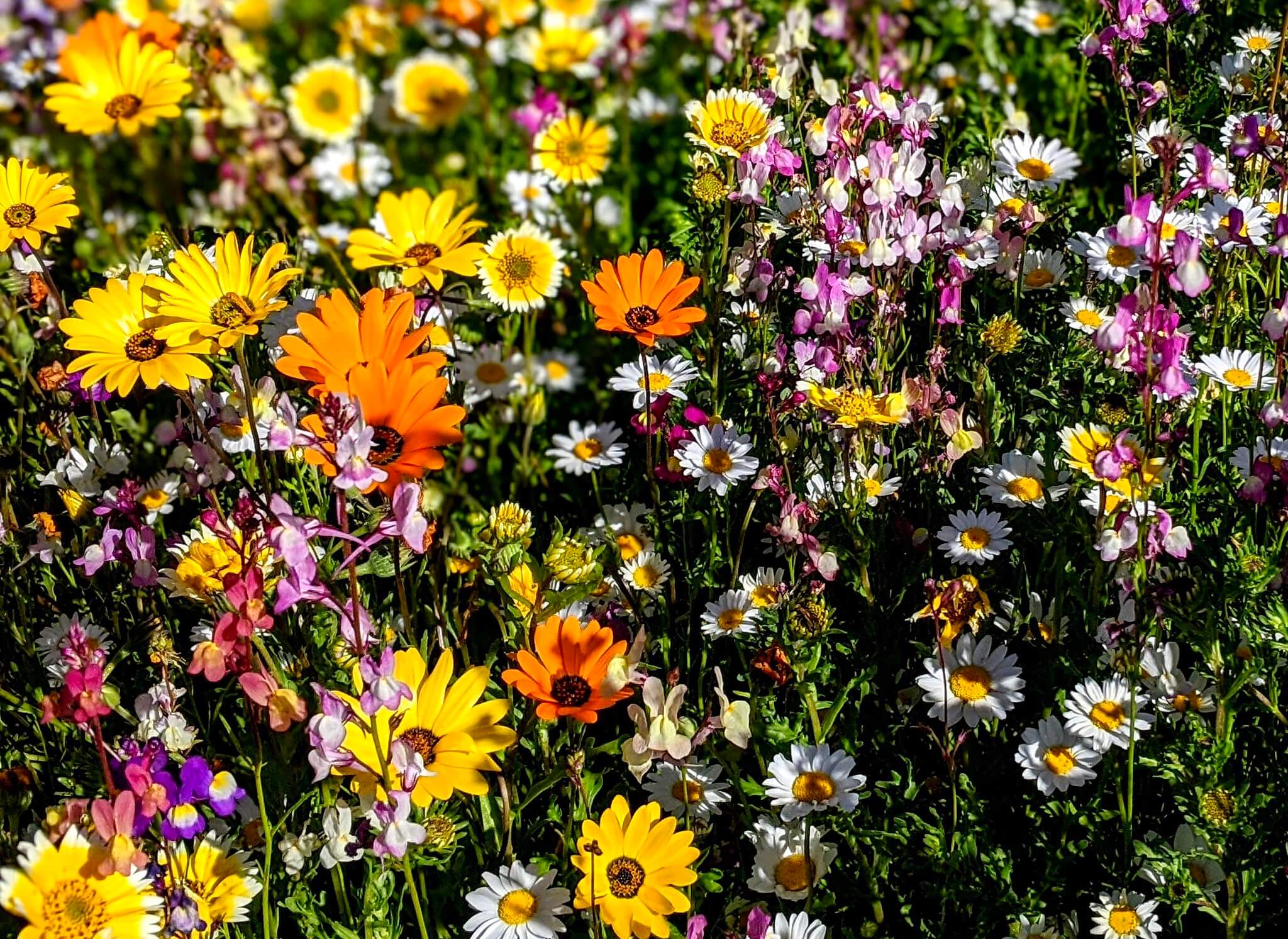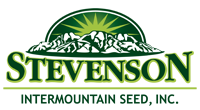Wildflower plantings can range from the small plot in home landscaping to large areas on commercial developments, highways, recreation sites and many other sites.
Whatever the size (large or small) of the area you wish to plant wildflower seed in the same basic principals and guides apply to successfully establishing a wildflower planting.
Site Suitability and Site Selection – Our selection of wildflower mixes are designed to do well in many locations and under many conditions but they all have a need for several basic things: 1. Favorable soil to grow in with sufficient nutrients, sufficient top soil depth, favorable soil texture, favorable soil PH and other favorable soil factors necessary for seed germination and plant establishment. (Most wildflowers do not need high soil fertility and in fact do best with low fertility soils.) 2. Sufficient water either naturally or from irrigation for seed germination and plant to grow. 3. Sunlight/Warmth sufficient for seed germination and plant growth.
Best Time To Plant – The annual wildflower seed mix can be planted anytime the ground is not frozen and sufficient moisture is available. All of our other wildflower seed mixes contain both annual and perennial species. These mixes establish best when planted in the early spring or late fall. For spring planting plant as early as possible up to about June 1st before it gets excessively hot. The annual species will come up soon with the perennial species being slower and may not be fully established and look their best until fall or even the next year. A dormant planting in the late Fall when cool temperature do no allow the seed to germinate also works well. With this type of planting the seeds lay dormant over the winter and are ready to germinate the next spring when favorable warmth and moisture conditions exist. Summer plantings are risky unless sufficient moisture is available for seed germination and plant establishment. The Southwest Desert Wildflower mix can be planted anytime sufficient moisture is available.
SITE PREPERATION
Weed Control – To the extent possible weed control is very desirable before planting. Tilling the site shallowly 2-3 inches or scarifing the topsoil to remove the existing vegetation is necessary. If possible after this soil treatment wait 2 weeks for any new weeds to re grow (possibly watering to encourage weed growth) and then spray the area with a non-selective herbicide like roundup to kill the weeds. You may want to repeat this process if time allows. 1-2 weeks after spraying with the non-selective short-acting Roundup type herbicide planting can take place. If an herbicide application is not possible or needed that’s ok. A good wildflower stand will crowd out many weeds but additional weed control after stand establishment may be needed or desirable in some circumstances.
Soil Preparation – After your weed control is completed the site should generally be free of existing vegetation unless you are inter-seeding wildflowers into an existing vegetation site. Do not re-till the soil, as it will bring more weed seed to the surface that will grow. The soil should be firm but not overly compacted. When walking on your seedbed you should not sink in more than ½ inch. This creates the best seedbed for proper seed planting and seed germination. If your soil is too fluffy it should be compacted.
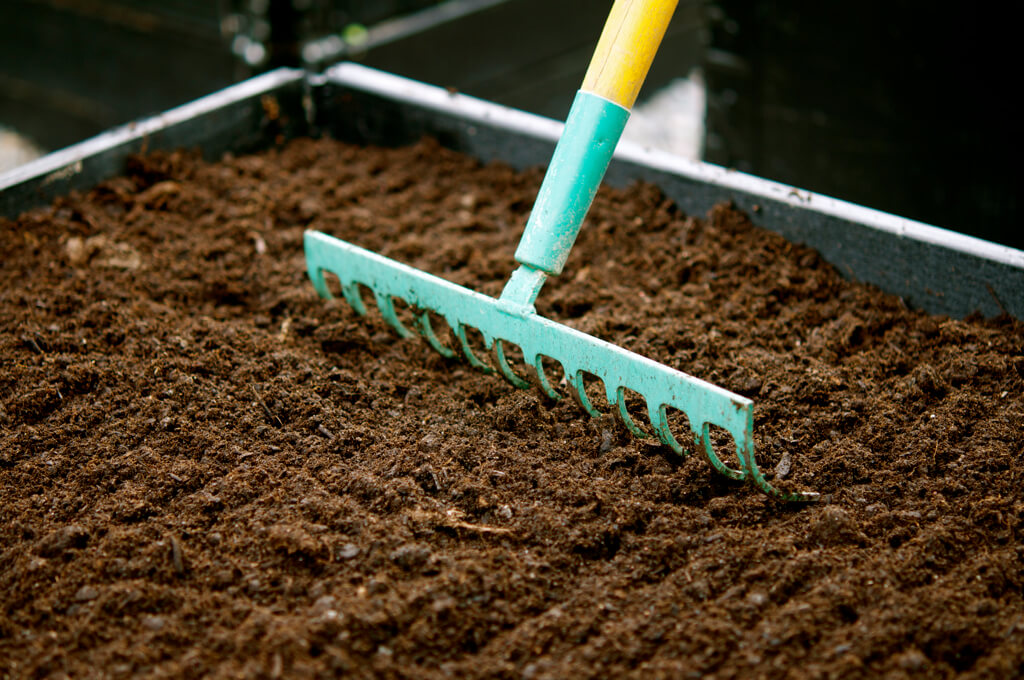
WILDFLOWER SEED MIX SELECTION
Stevenson Intermountain Seed offers 7 standard wildflower seed mixes suited for use in the interior western U.S. Each mix contains a large number of species that have been specially selected to provide a broad range of adaptability while creating spectacular displays of many colors and shapes of blossoms and plants throughout the growing season. Climate regions, elevations, latitudes and customer personal preferences all dictate which mix is best for your site. Stevenson Intermountain Seed, Inc. can provide the expert technical advice to help you select the best wildflower mix for your site and purposes. Custom wildflower mixes designed to your specifications are also available.
Correct Seeding Rate – Each of our wildflower seed mixes have a suggested seeding rate. If planting in a less than ideal site or by a less than ideal planting method the seeding rate should be increased even up to double the recommended amount.
Correct Planting Depth – Seed needs to be planted so it is in firm contact with the soil to help it maintain moisture for germination, plant growth and to anchor its roots into the soil. Usually the size of the seed determines the proper seeding depth. Our wildflower mixes contain a large number of species with various sizes of seed. The best seeding depth for these mixes is between 1/8 to ¼ inch deep. Seed planted to deep will not be able to come up. Too deep of seed placement in the soil when planting is a major cause of wildflower seeding failures. If a portion of the seed remains on the surface after planting that is ok.
Best Seeding Method – The method you select for seed placement into the soil will likely depend on the size of your project, equipment available and other factors. Wildflower seed can be planted by broadcast methods, specialized seed drills and hydro-seeding. Which ever method is used the goals of the seed placement should be 1. Even dispersement of the seed and 2. Proper depth placement of the seed with firm contact of the seed with the soil. On large projects mechanical equipment will likely be used to accomplish the task. On smaller projects hand operated seed planting equipment, like drop-seeders or broadcast seeders, rakes and hand landscaping rollers or soil compactors will do the job fine. The better job you do planting the better results you will achieve. Because most wildflower seed is quite small in size it is often beneficial to mix the seed with an organic or mineral carrier at a 3 or 4 to 1 ratio so more material is available to distribute evenly over the area to be planted. Fine sand is one possible carrier. For example: If you are planting 1 pound of wildflower seed, mix it with 3 pounds of sand. This will give you 4 pounds of material to plant, which will make it easier to cover the entire planting area evenly. For a more even distribution of the seed it may be desirable to divide the seed in half and plant the first half working in a north and south direction and the second half of the seed in a east and west direction.
Mulches & Erosion Control – If you hydro-seed you will likely be applying a mulch layer with your seed. With broadcast or drill seeding an application of organic mulch can be helpful in maintaining soil moisture while the seed is germinating. Mulch is not absolutely necessary but moist soil while the seed is germinating is absolutely necessary. Mulches can help reduce soil movement from wind and water also.
If your site is on a slope or subject to substantial wind or water that will cause soil movement or erosion various erosion control products in addition to mulches are available such as erosion-control blankets.
If hydro-seeding/mulching a dual application with the seed and 10% of the mulch with the first application and a second application with the remaining mulch places more seed with direct contact with the soil for better seed germination and plant establishment.
Supplemental Water-Irrigation – On some projects providing addition water besides rainfall is an option and on some it is not. The amount of time of moist soil and warm temperatures required for wildflower seed to germinate and start to grow varies some but can range from 1-8 weeks. Some even require a period of cold stratification over winter before they will germinate fully. Supplemental irrigation water can help guarantee the required moist soil for germination but mother nature with rain can also but is not always dependable to do so.
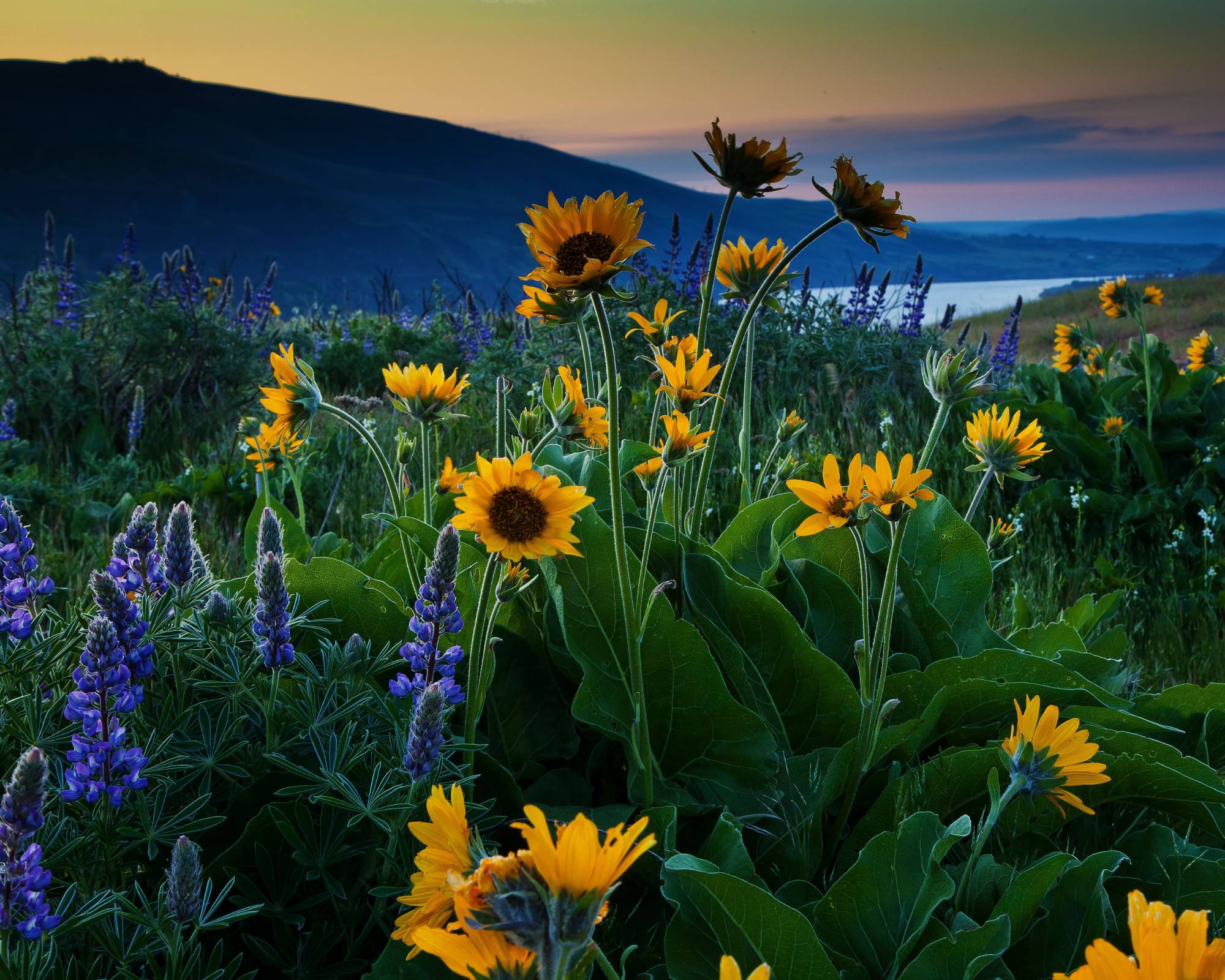
CARE AFTER ESTABLISHMENT
Fertilizing – Fertilizing your wildflower site is usually not necessary unless you have extremely low fertility soil. If you do need fertilizer use a low nitrogen fertilizer like 5-10-10. Nitrogen often encourages vegetation growth and not flower growth and also weed growth.
Irrigation – Providing supplemental water or irrigation to your wildflower site may be an option or may not be possible. Most wildflowers after they are established are quite drought tolerant and low water users. However, all plants need water to perform their best and in some cases when adding supplemental water is an option it will be beneficial. Too much water may promote excessive weed growth and can be detrimental to low water using plants.
Weed Control – Even if you did a good job of weed control before you planted your wildflower seed new weeds will appear in your wildflower site from dormant seed that was in your soil. Almost all soil has dormant weed seed waiting to grow when conditions are right. Dormant seed in the soil can stay viable for many years waiting for the right time to grow.
Depending on the size of your project and the resources you have doing continual weed control will help your wildflowers look their best. Pulling or digging weeds by hand as well as carefully spot spraying with an herbicide like Roundup will help control the weeds.
Fall Mowing – Often times it is beneficial and looks good to mow your wildflower site to a height of about 6 inches before winter weather sets in usually in November. Mowing will distribute the seed from the plants to help maintain your wildflower site and the perennials will be ready to start growth in the spring with out last year’s dead growth visible.
Replanting – Adding additional seed to bare or sparse spots may be needed. Also in some cases it may be desirable to supplement your wildflower site with a light application of new seed, mostly annuals, each year to maintain its diversity.
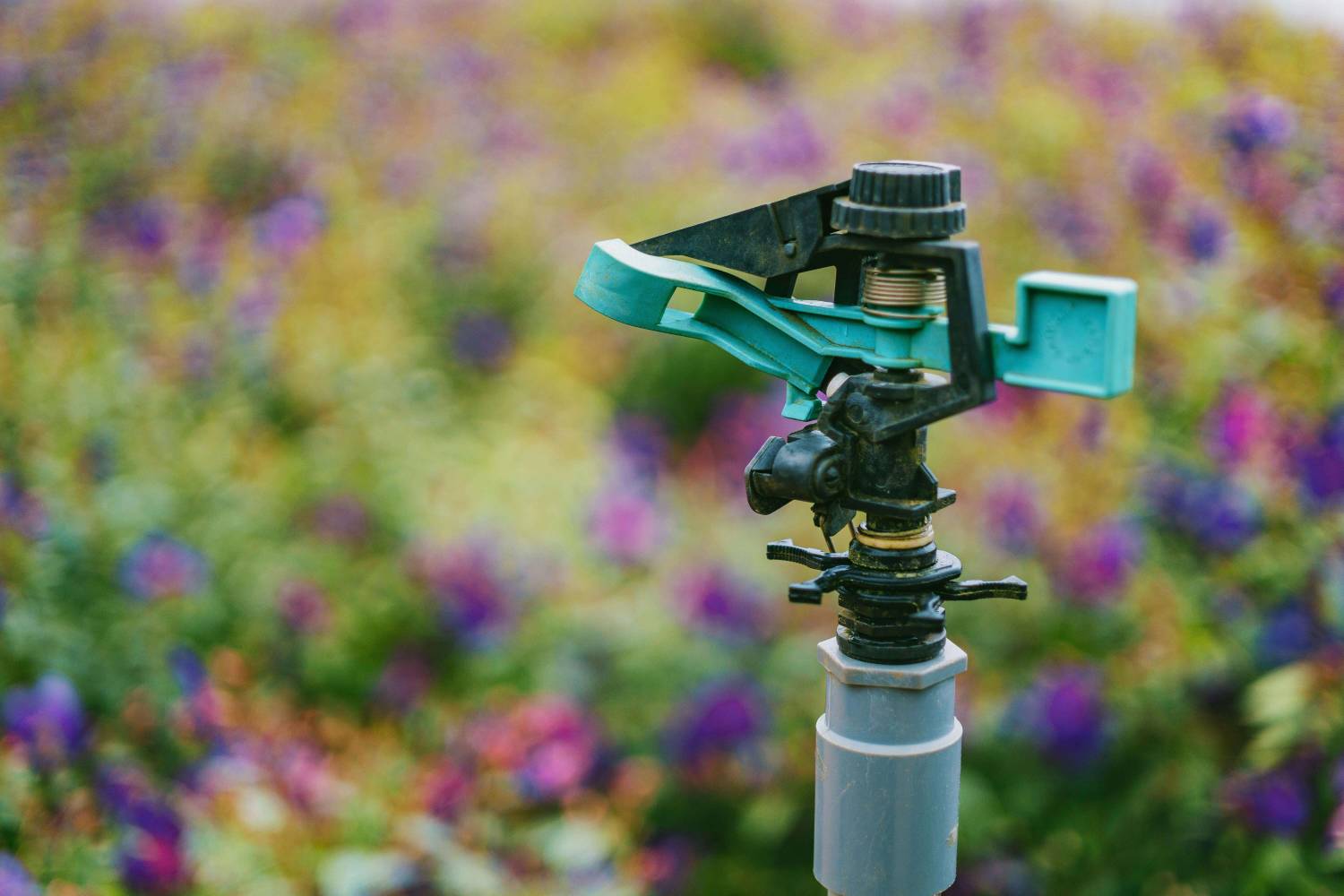
What To Expect
After planting your wildflower seed when the air and soil is warm enough and the soil is moist some of the wildflower species (mostly annuals) will germinate and begin to grow after about 10-14 days. Other species will take longer, 2-8 weeks for germination. Some of the slowest perennials will take even longer and some of them require cold stratification over the winter and will not germinate until the spring after winter stratification.
Some of the fastest establishing annuals will flower within about 6 weeks with additional annuals and perennials flowering all growing season long. Most of the perennials will look there best on the second year so your wildflower garden will likely look different on the second year and on following years than it did on the first year. The perennials will grow each year and many of the annuals will reseed themselves and grow each year also. If needed additional seed to improve your wildflower site should be added.
Disclaimer: The following recommendations are based on the best information available but they do not guarantee a perfect wildflower site. Unforeseen events or conditions that cannot be controlled may occur or be present that will adversely affect the outcome of your wildflower planting. Because of this Stevenson Intermountain Seed, Inc. makes no guarantee for the results of these recommendations.
